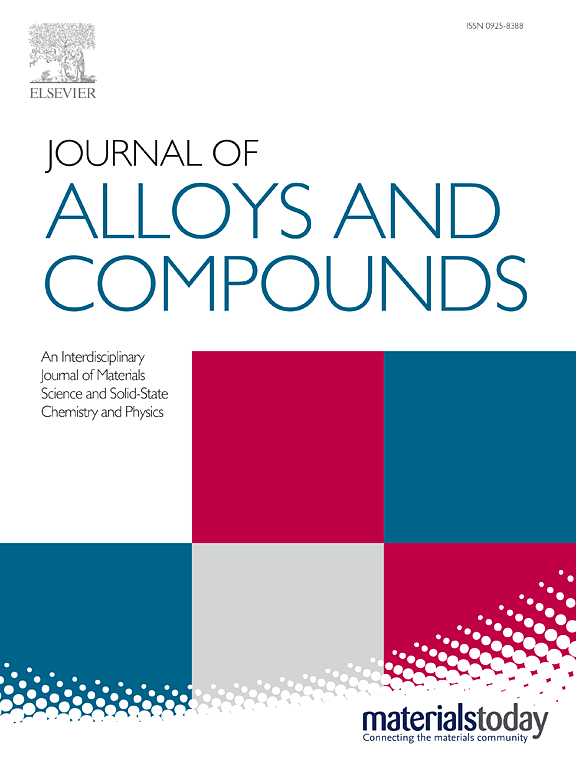纳米沉淀介导的Fe3Ga合金磁畴壁钉钉及微量钬掺杂增强磁晶各向异性
IF 5.8
2区 材料科学
Q2 CHEMISTRY, PHYSICAL
引用次数: 0
摘要
采用先进的透射电镜技术研究了微量钬(Ho)掺杂对(Fe0.75Ga0.25)99.7Ho0.3合金显微组织和磁性能的影响,重点研究了显微组织与磁性能的直接关联。洛伦兹透射电镜和离轴电子全息(OAEH)分析表明,Ho的掺入诱导了纳米沉淀的形成,促进了晶粒的细化,并成为有效的畴壁钉住中心,从而显著限制了畴壁的迁移率。这些微观结构的改变导致低磁场下的慢磁响应和磁晶各向异性的增强,这一点得到了全息数据的定量评估的证实。研究结果表明,微量稀土掺杂可以有效地改善Fe3Ga合金的微观结构和磁晶各向异性,从而优化Fe3Ga合金的磁性能。同时,我们展示了先进的基于tem的磁成像解决纳米尺度磁行为的能力,包括实时畴壁运动和空间分辨各向异性能量量化。本文章由计算机程序翻译,如有差异,请以英文原文为准。
Nanoprecipitate-mediated magnetic domain wall pinning and enhanced magnetocrystalline anisotropy via trace holmium doping in Fe3Ga alloys
This study investigates the influence of trace holmium (Ho) doping on the microstructural and magnetic properties of (Fe0.75Ga0.25)99.7Ho0.3 alloys through advanced transmission electron microscopy (TEM) techniques, with a particular emphasis on directly correlating microstructure-magnetism. Lorentz TEM and off-axis electron holography (OAEH) analyses demonstrate that Ho incorporation induces the formation of nanoprecipitates, which facilitate grain refinement and serve as effective domain-wall pinning centers, thereby significantly restricting domain wall mobility. These microstructural modifications result in a slow magnetic response at low applied fields and enhanced magnetocrystalline anisotropy, as corroborated by quantitative assessments of domain wall width derived from holographic data. Our findings demonstrate that trace rare-earth doping serves as an effective strategy for engineering microstructures and tailoring magnetocrystalline anisotropy for optimized magnetic properties of Fe3Ga alloys. Concurrently, we demonstrate the capability of advanced TEM-based magnetic imaging to resolve nanoscale magnetic behavior, including real-time domain wall motion and spatially resolved anisotropy energy quantification.
求助全文
通过发布文献求助,成功后即可免费获取论文全文。
去求助
来源期刊

Journal of Alloys and Compounds
工程技术-材料科学:综合
CiteScore
11.10
自引率
14.50%
发文量
5146
审稿时长
67 days
期刊介绍:
The Journal of Alloys and Compounds is intended to serve as an international medium for the publication of work on solid materials comprising compounds as well as alloys. Its great strength lies in the diversity of discipline which it encompasses, drawing together results from materials science, solid-state chemistry and physics.
 求助内容:
求助内容: 应助结果提醒方式:
应助结果提醒方式:


